
Bend Longer Blades to Cut Flush
Longer reciprocating saw blades aren’t just for cutting wider stuff—they also work great for flush-cutting. Bend the blade so a good portion of it rides flat along the floor or whatever surface you’re working on, and use the end portion of the blade to do the cutting.

Cover the Shoe to Protect the Surface
There’s nothing subtle about a reciprocating saw. It’s a downright brute and usually unsuitable for delicate jobs. The saw’s violent vibrations can mar surfaces, and unlike on jigsaws, covering the shoe with tape is not enough to protect the surface. When cutting a hole through a finished floor, slice a small section of cheap pipe insulation in half and tape it to the shoe. It’s an inexpensive and easy way to avoid costly floor repairs.
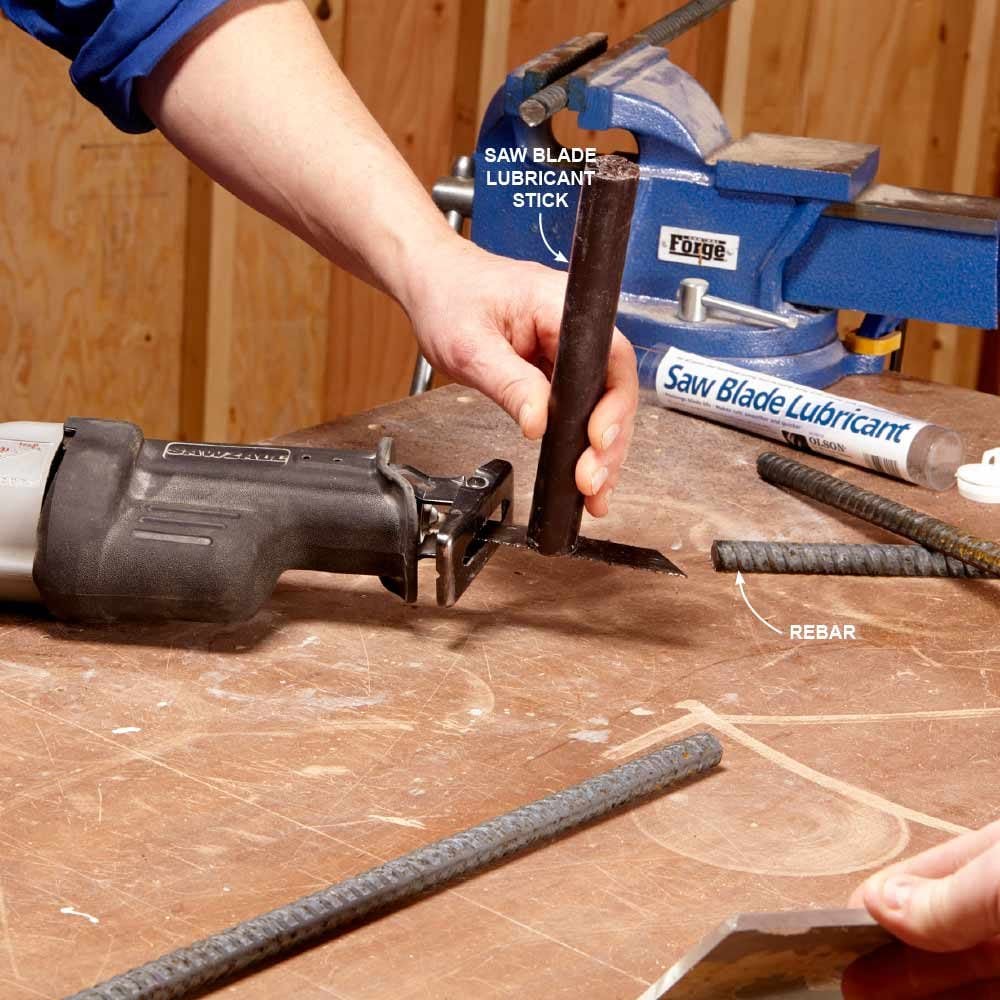
Extend Blade Life with Lubrication
Blades heat up as you cut, especially when you’re cutting metal, and a hot blade dulls quickly. If you have a lot of metal to slice, rub on blade lubricant between cuts. Blade lubricant helps keep the blades cooler and the teeth free of clogs from metal chips. You can get the Olson Saw Blade Lubricant stick shown here online or at tool retailers.
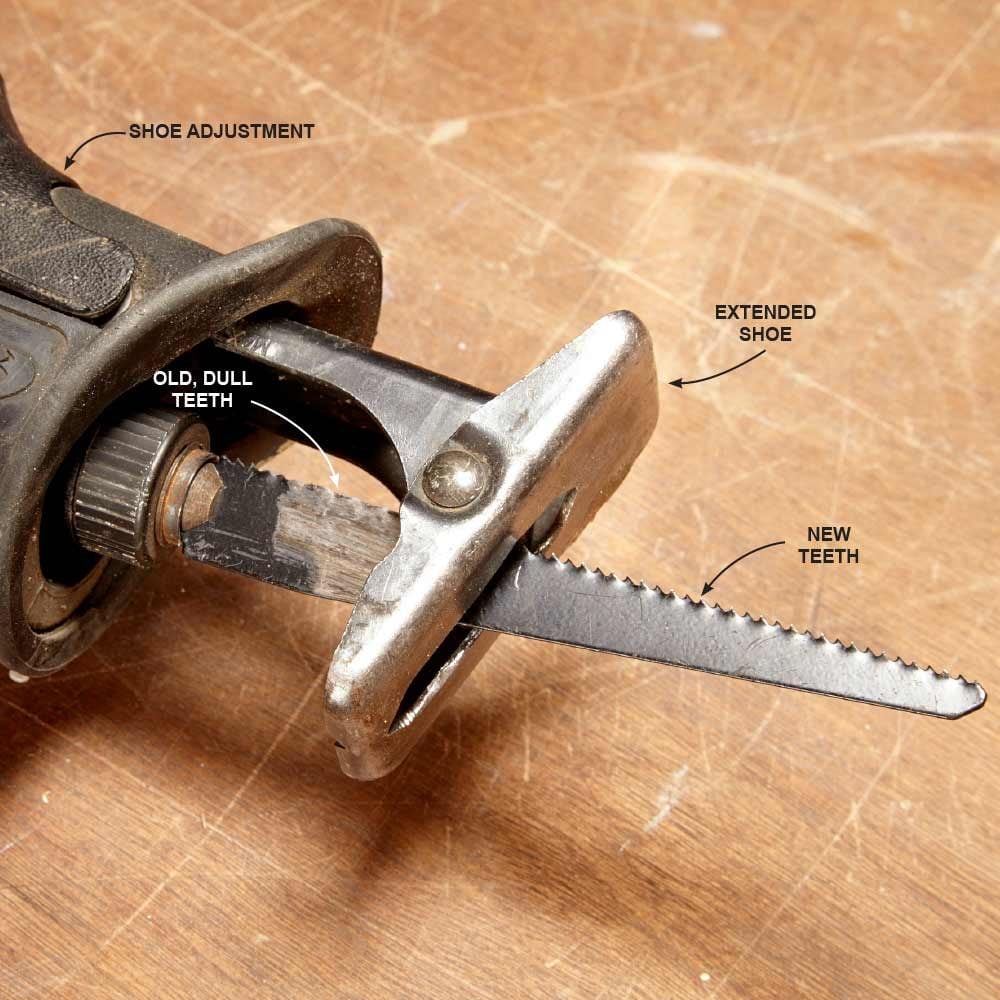
Adjust the Reciprocating Saw Shoe to Extend Blade Life
Pushing the shoe up against the work surface is a good way to avoid kickbacks and reduce vibration. The problem is that the teeth right next to the shoe always wear out before the teeth on the rest of the blade. Reciprocating saws with adjustable shoes are nice because you can adjust the shoe so the cutting action occurs at different spots on the blade.
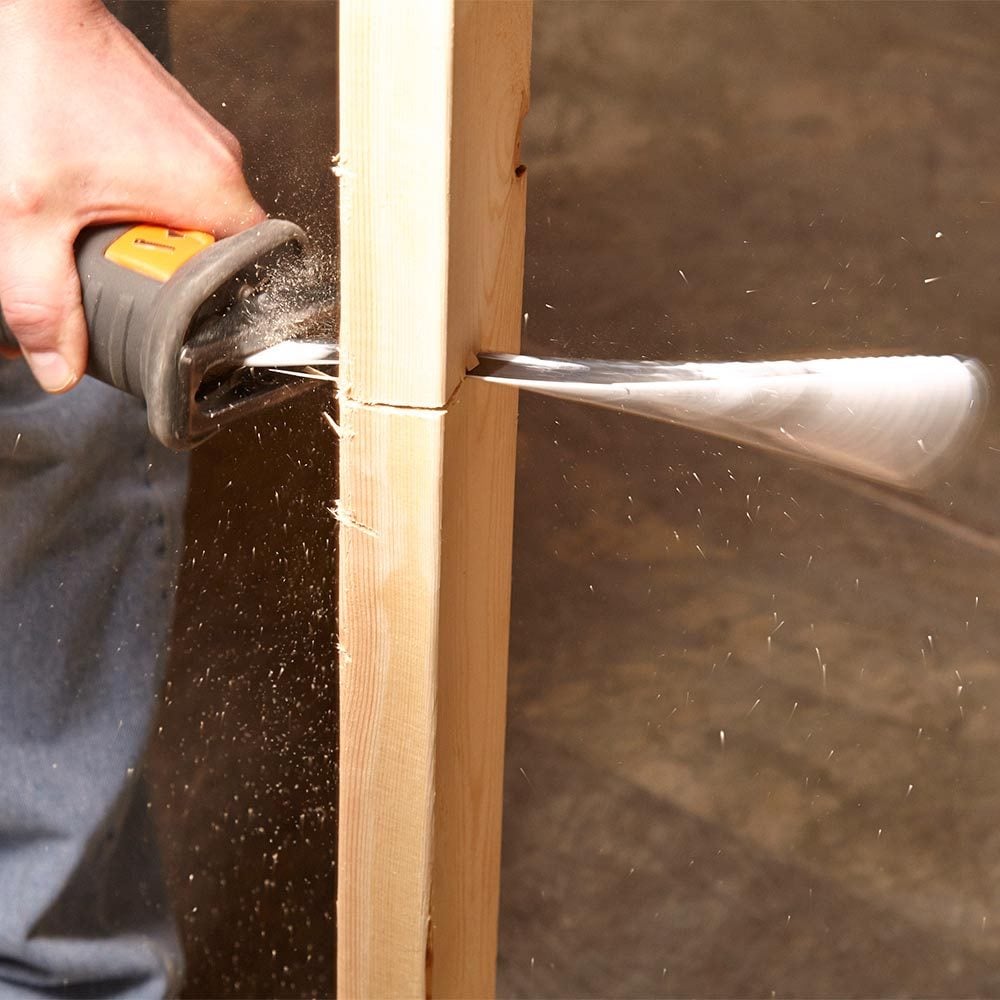
Avoid Waggle—Use Smaller Blades
Blades for reciprocating saws come in different lengths for a reason. Cutting smaller material with longer blades can cause the end of the blade to violently waggle back and forth. This can result in a slower cut, a whole lot of vibration and possibly a bent blade. So choose a blade only a couple inches longer than whatever you’re cutting.
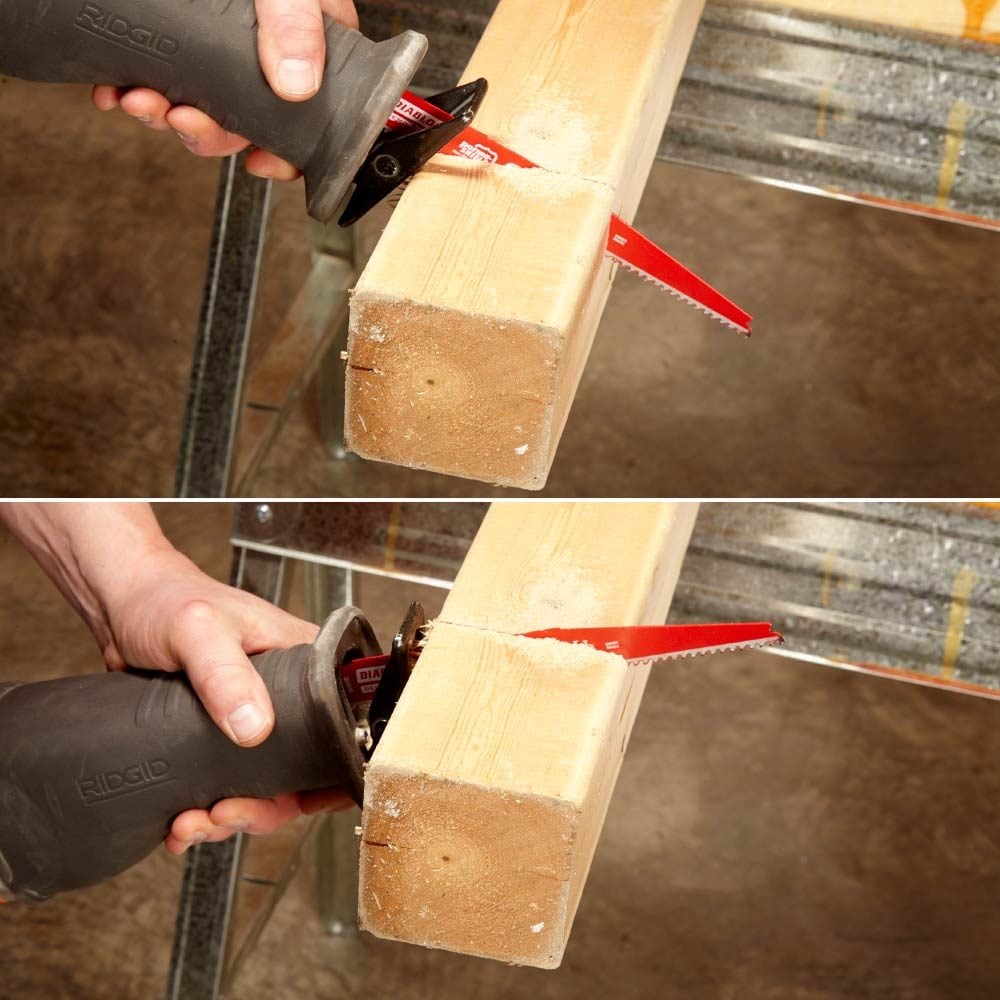
Change Angles for Cutting Faster
When cutting through thick material, periodically change the angle of the blade. It reduces the surface area being cut, which reduces the friction and makes for a faster cut. And whenever possible, keep the shoe tight up against the cutting surface to avoid kickbacks and to keep the material from rattling around.
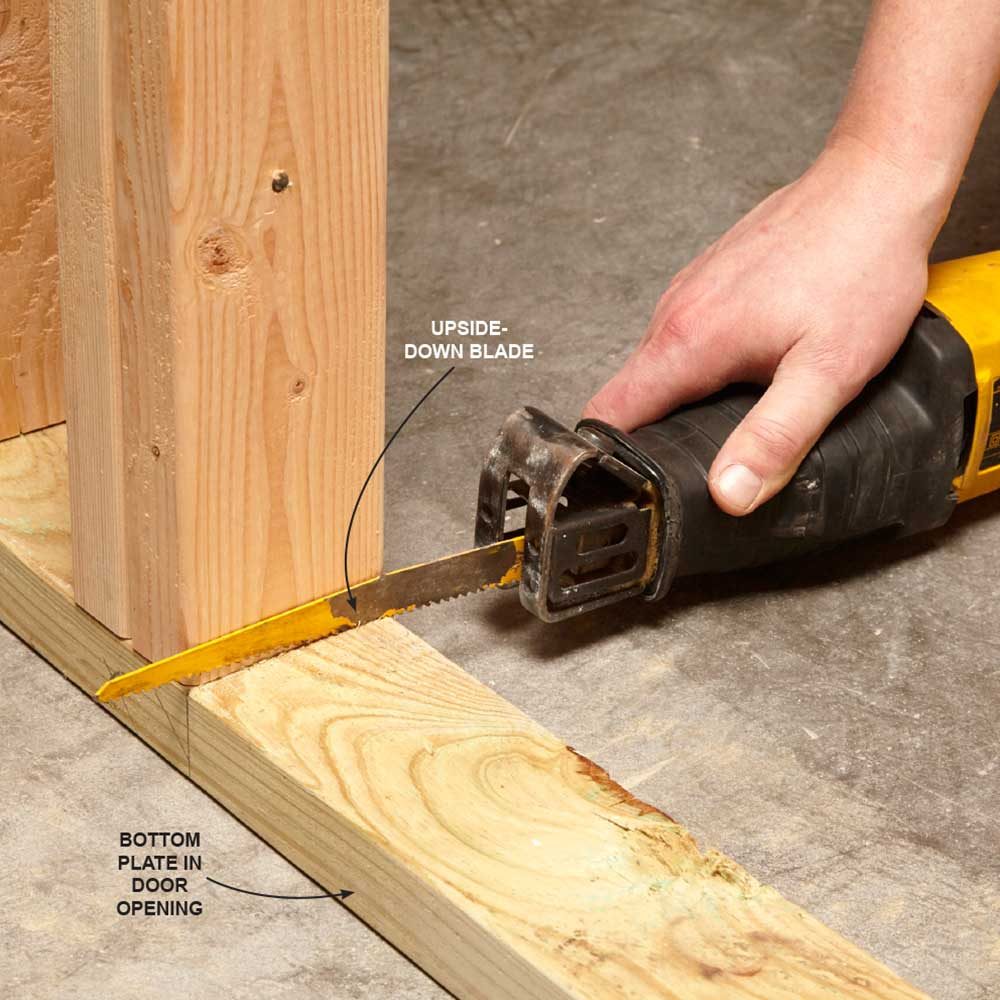
Flip the Blade to Get Down Close
Blades can be inserted into most recip saws with the teeth facing up or down (some new saws accept blades in four directions). When cutting something that’s lying flat on the ground, like the bottom plate of a newly framed door opening, insert the blade with the teeth pointing up and flip the saw upside down. That way the handle won’t get in the way and you’ll be able to cut more parallel to the ground, which will reduce the chance of kickback.

Use Framing as a Blade Guide
Cut the plywood out of window openings with a longer blade and bow it a bit so it rides along the framing. You’ll end up with a nice, clean cut every time. And don’t forget to warn the guys outside so they don’t get conked on the noggin with a chunk of plywood.

Set Your Saw to Orbital for Faster Cuts in Wood
Some reciprocating saws have an orbital cutting feature. This causes the blade to cut in a slight orbital pattern instead of back and forth in a straight line. Set the saw to full orbital when cutting through wood. If your saw has an adjustable orbital feature like this one, set it halfway when cutting through nail-embedded wood. Turn the feature completely off when cutting through metal. If you don’t, the blade will bounce off the work surface, slowing down the cut and rattling your fillings loose.
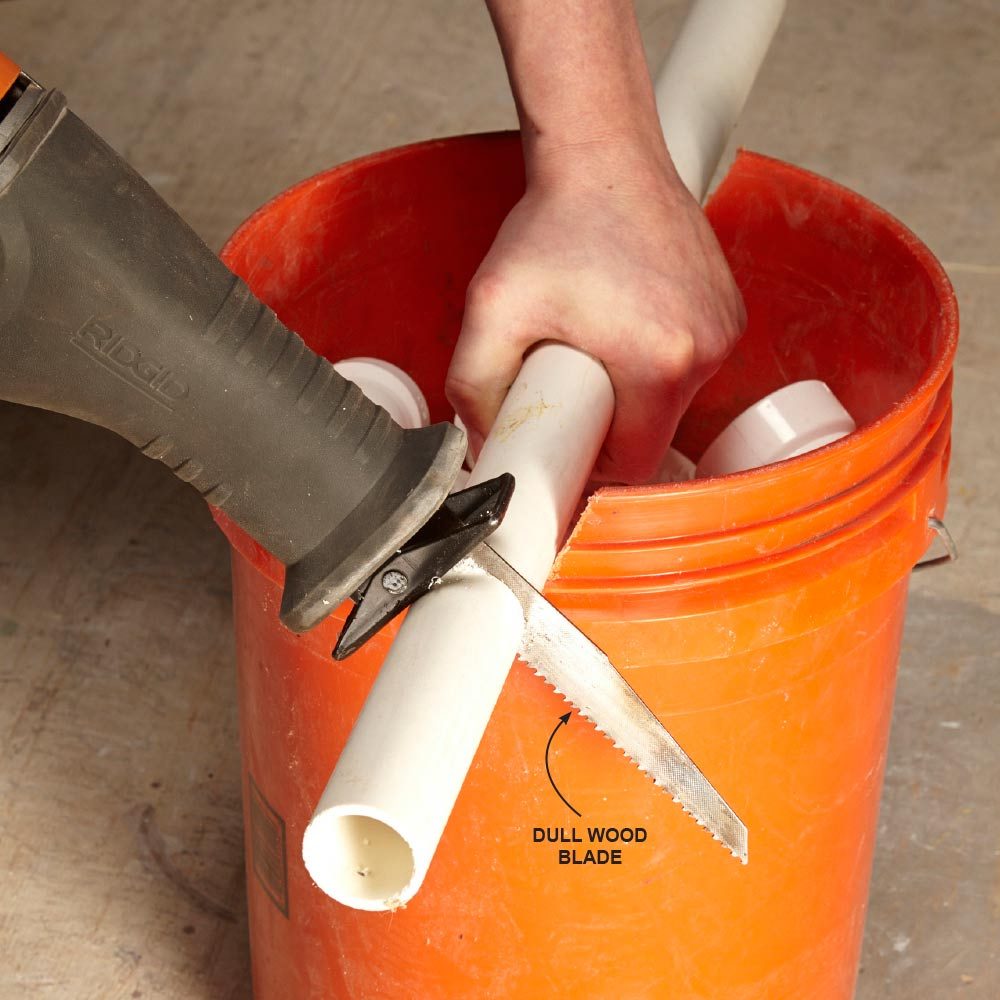
Cut Plastic With Dull Blades
In some cases a dull blade is preferable: Cutting plastic pipe with a sharp, aggressive blade can cause the teeth to grab the pipe and jerk it back and forth instead of cutting it. A dull wood blade cuts through plastic almost as well as a blade specifically designed for the task.
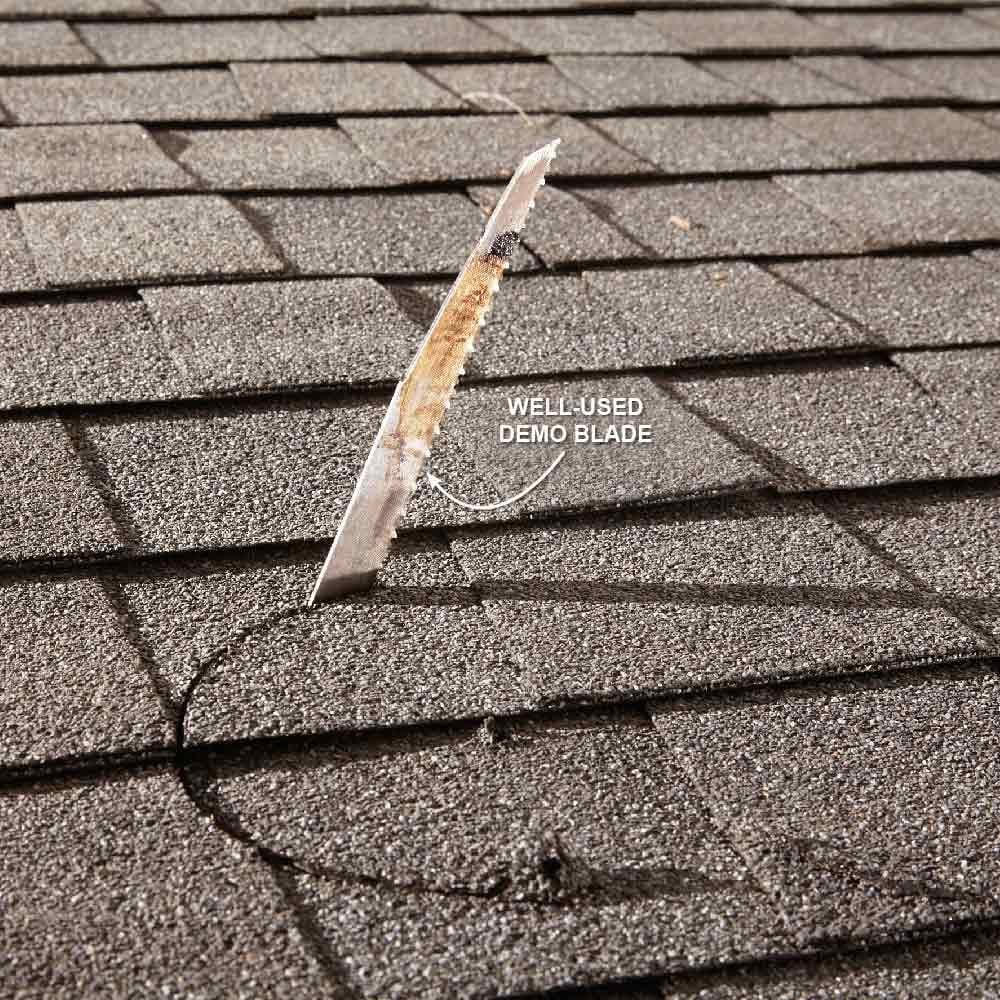
What to Do With Old Blades
Some jobs can dull a reciprocating saw blade in just a few seconds. Don’t sacrifice your good, sharp blades on jobs like these. Instead, keep a few well-used blades for rough work like cutting through shingles.
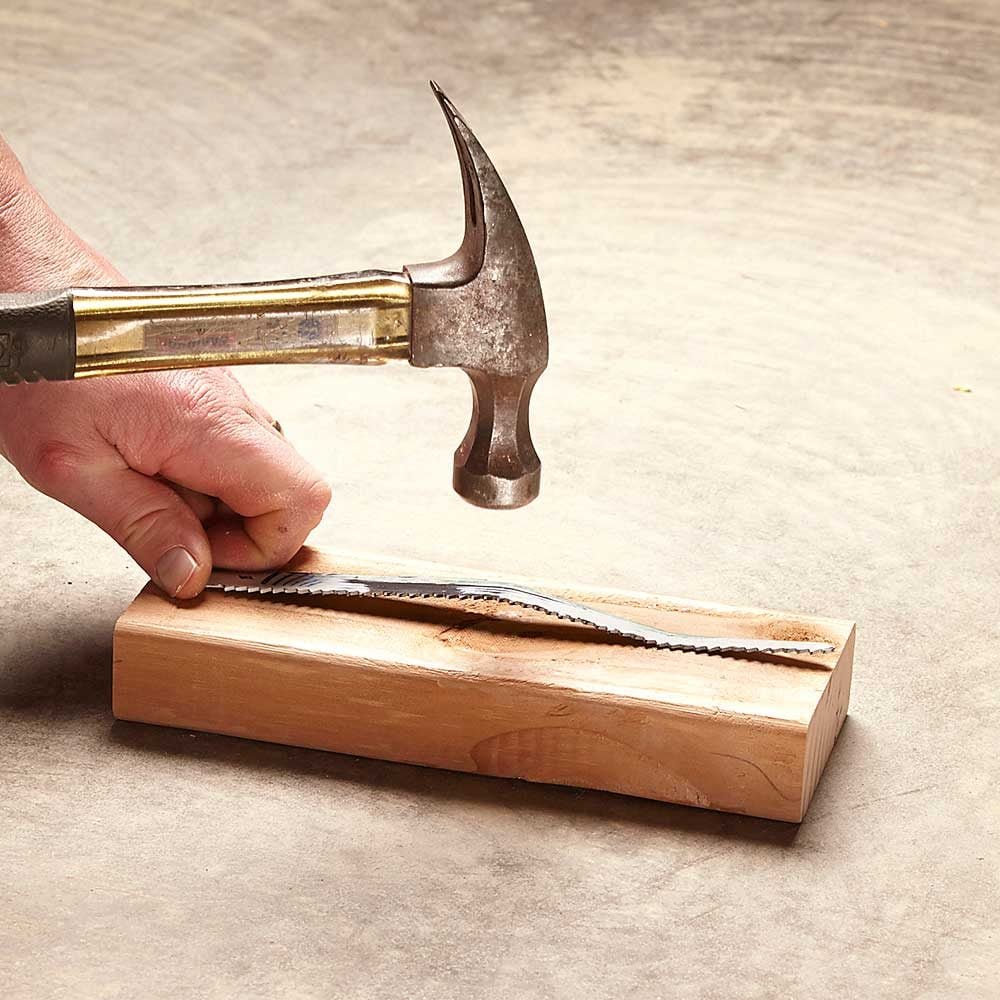
How to Fix Reciprocating Saw Blades
Kickbacks are inevitable when working with a recip saw, and a kickback often results in a bent blade. Blades are relatively inexpensive these days, but if you’re down to your last one or want to avoid a trip back to the truck, you can bend them back into shape. Grab a block of wood and pound down the raised section. Try to avoid pounding directly on the teeth so you don’t damage them.